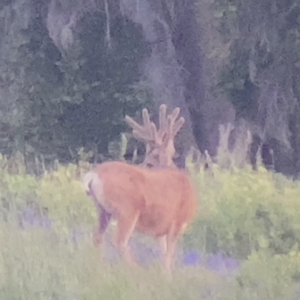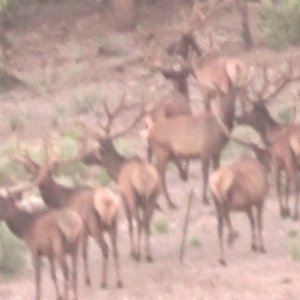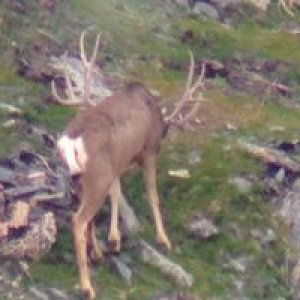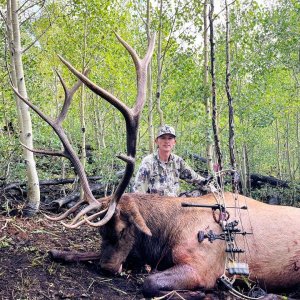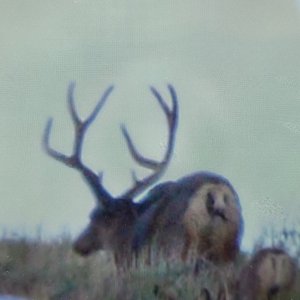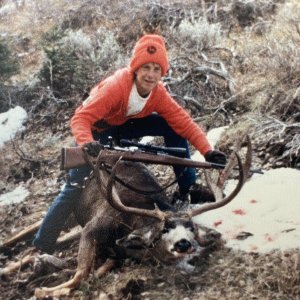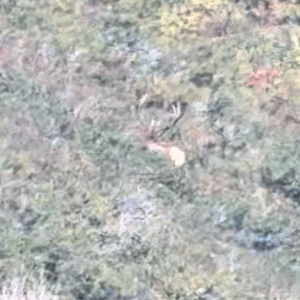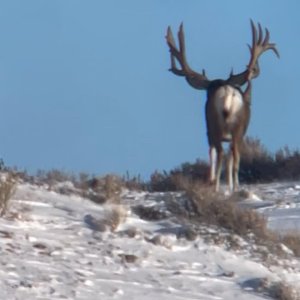elkfromabove
Very Active Member
- Messages
- 2,122
LAST EDITED ON Jan-15-14 AT 02:34PM (MST)[p]Let me start this thread with some disclaimers:
1) I'm not a biologist. I just ask a LOT of questions.
2) Some of the answers I receive may or may not reflect the latest up to date knowledge.
3) These transplant are NOT for the primary purpose of increasing the herds elsewhere in the state. They are done to remove doe deer from winter range that is being over-utilized. But since the deer have to be moved somewhere similar to their home range, these studies and any herd increase in the release areas are beneficial, but important side notes.
4) I've been told by those in charge of the transplant and studies that, except for the DWR salaries and use of DWR equipment, SFW is still paying for these projects.
5) As this thread progresses with updates there may be other questions you may want to ask. Feel free to do so and I'll answer them as best I can, but realize not even the biologists have all the answers yet, thus the studies.
6) We may have to combine the updates from the two studies into one thread depending on how we receive the updates. We'll decide that down the road. (The other updates are on the thread "Will it work?".)
7) LET'S KEEP IT CIVIL PLEASE!
This 1st post will be my brief account of the actual transplant.
On Monday we picked up 33 deer, but 2 of them died and both of them were necropsied (autopsied). One (#1) died on the processing table from a broken rib lung puncture that happened during the capture. She also happened to have low body fat which probably would have killed her in the next month or so. The other deer (#21) had to be put down in the trailer at the release site east of Holden because she wouldn't/couldn't get up due to capture myopathy (104* temp and shock).
Tuesday's capture was slower due to the increased wind. It makes it hard to eyeball the trajectory of the net shot from the moving helicopter at a moving/dodging target and it also keeps the animals in the trees. So we brought in our last deer (#52) at 4:35.
On the processing table we did basically what we did last year except for the pregnancy ultra sound. We still did the weighing, body measurements, body fat measurements, taking 2 blood samples and a snipet of anal tissue for pregnancy, mineral, white cell count, CWD test. We also did the teeth aging, collaring, ear tagging (white tag), and temperature.
That's it in a nutshell, but if there are any further questions regarding the process I'll try to answer them or get the answer for you.
Thanks for reading and until our 1st update from the BYU crew, I remain yours truly, (That's too d*** formal)
Lee Tracy (United Wildlife Cooperative Southern Region Chair)
[email protected]
1) I'm not a biologist. I just ask a LOT of questions.
2) Some of the answers I receive may or may not reflect the latest up to date knowledge.
3) These transplant are NOT for the primary purpose of increasing the herds elsewhere in the state. They are done to remove doe deer from winter range that is being over-utilized. But since the deer have to be moved somewhere similar to their home range, these studies and any herd increase in the release areas are beneficial, but important side notes.
4) I've been told by those in charge of the transplant and studies that, except for the DWR salaries and use of DWR equipment, SFW is still paying for these projects.
5) As this thread progresses with updates there may be other questions you may want to ask. Feel free to do so and I'll answer them as best I can, but realize not even the biologists have all the answers yet, thus the studies.
6) We may have to combine the updates from the two studies into one thread depending on how we receive the updates. We'll decide that down the road. (The other updates are on the thread "Will it work?".)
7) LET'S KEEP IT CIVIL PLEASE!
This 1st post will be my brief account of the actual transplant.
On Monday we picked up 33 deer, but 2 of them died and both of them were necropsied (autopsied). One (#1) died on the processing table from a broken rib lung puncture that happened during the capture. She also happened to have low body fat which probably would have killed her in the next month or so. The other deer (#21) had to be put down in the trailer at the release site east of Holden because she wouldn't/couldn't get up due to capture myopathy (104* temp and shock).
Tuesday's capture was slower due to the increased wind. It makes it hard to eyeball the trajectory of the net shot from the moving helicopter at a moving/dodging target and it also keeps the animals in the trees. So we brought in our last deer (#52) at 4:35.
On the processing table we did basically what we did last year except for the pregnancy ultra sound. We still did the weighing, body measurements, body fat measurements, taking 2 blood samples and a snipet of anal tissue for pregnancy, mineral, white cell count, CWD test. We also did the teeth aging, collaring, ear tagging (white tag), and temperature.
That's it in a nutshell, but if there are any further questions regarding the process I'll try to answer them or get the answer for you.
Thanks for reading and until our 1st update from the BYU crew, I remain yours truly, (That's too d*** formal)
Lee Tracy (United Wildlife Cooperative Southern Region Chair)
[email protected]




